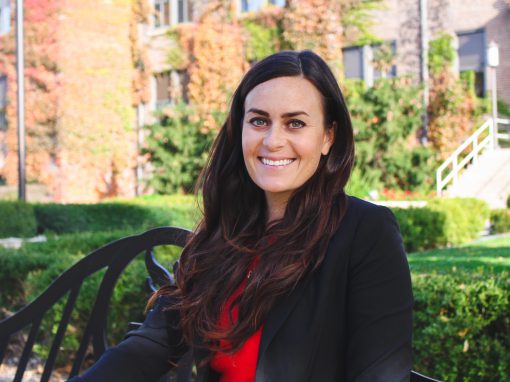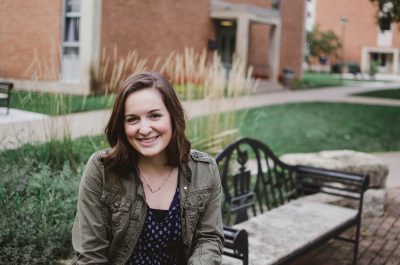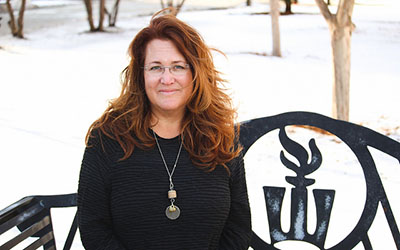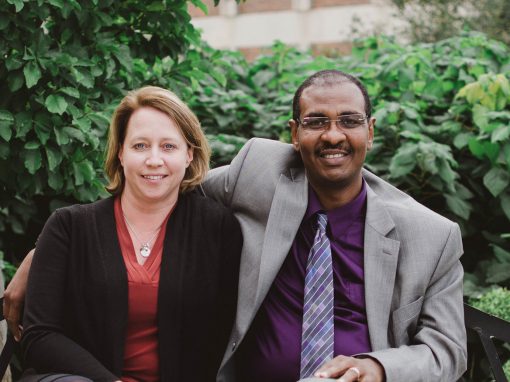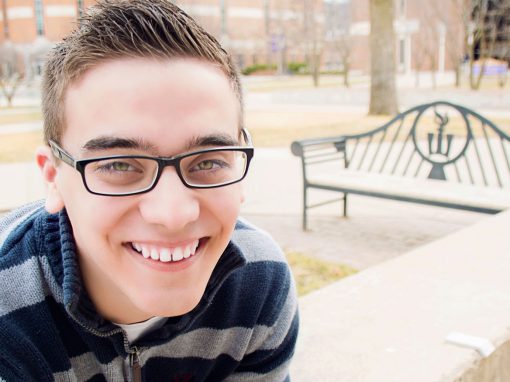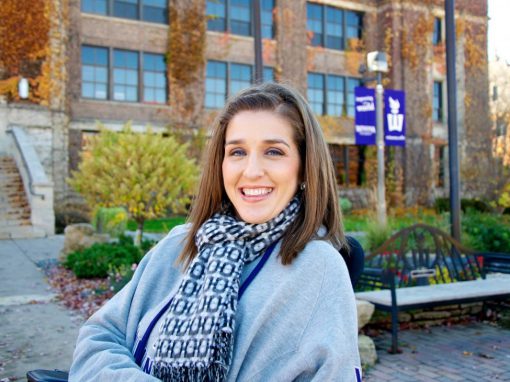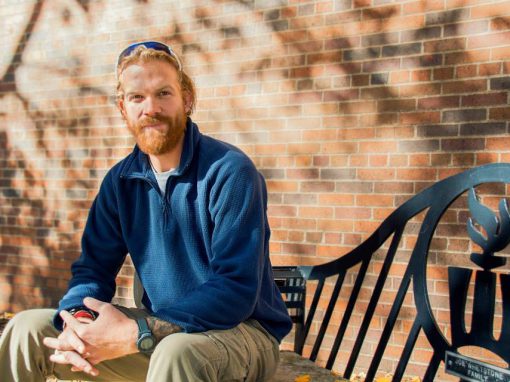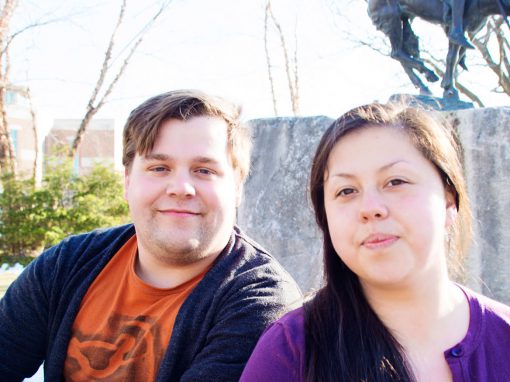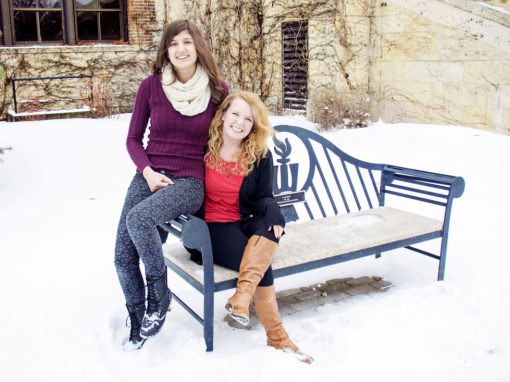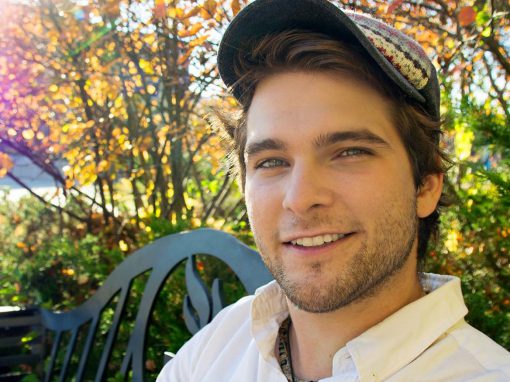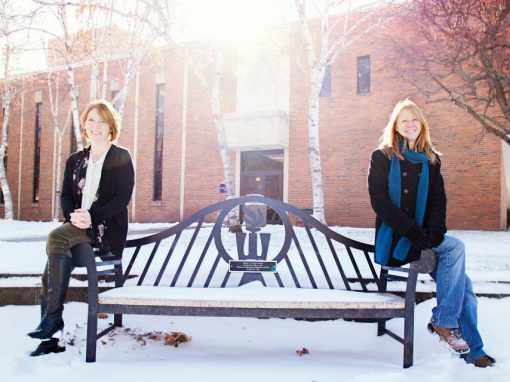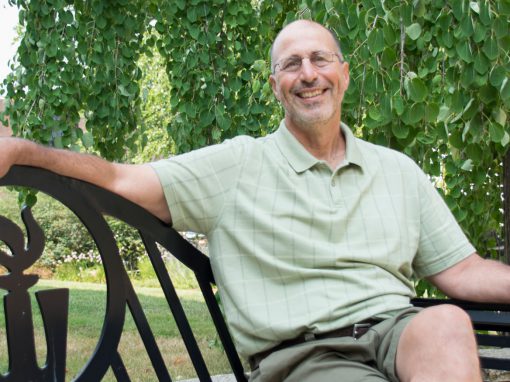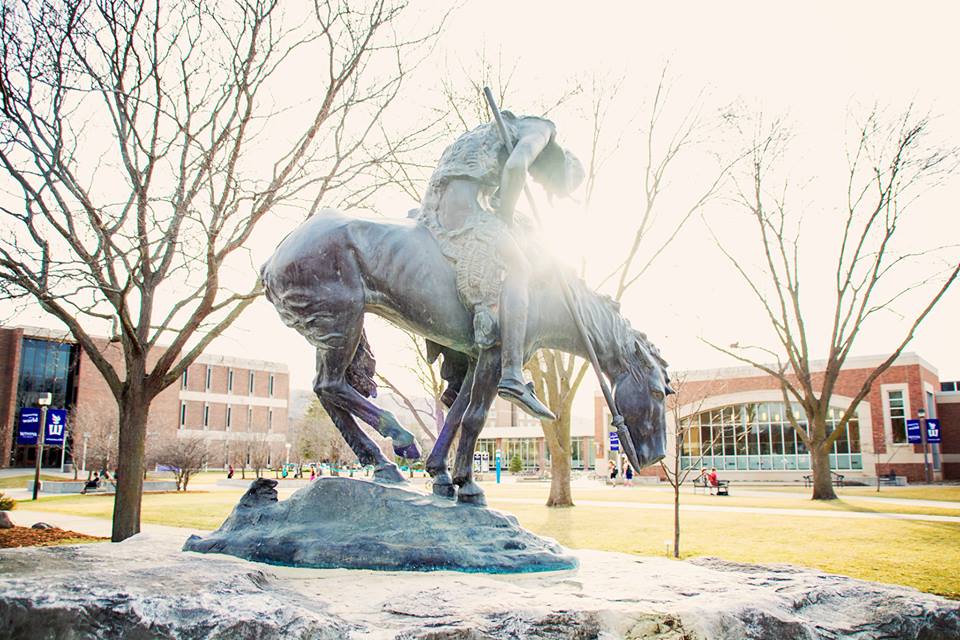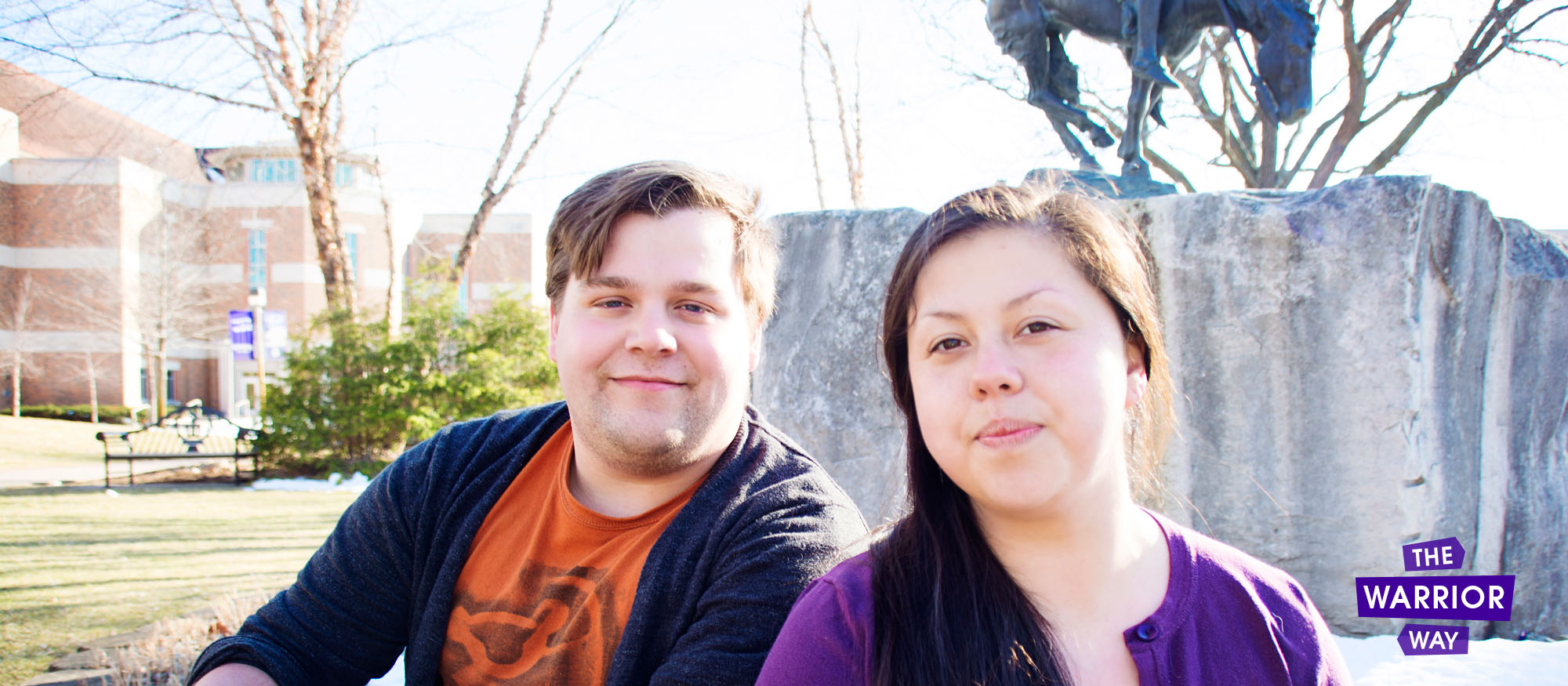
Alexander Paulson ’16 & Aaron Camacho ’17| Integrating Past & Present
Alexander is a Student from Baraboo, WI
TSEOL & Spanish Education Major and Sustainability Minor
Aaron is a Student from Fountain City, WI
Environmental Biology Major and Sustainability Minor
“Where there’s no respect, there’s no understanding, and if that doesn’t exist, there’s no growth, no forward momentum as a society.”
If you have walked through campus you have likely seen The End of the Trail statue located in front of the PAC. Most people—myself included— walk right past it, oblivious to the contention surrounding that statue of a Native American man on a horse—not riding proudly but looking rather beaten and dejected. For this reason, some find it deeply offensive and want it destroyed or at least hidden away in the depths of the Library’s art archives while others argue it should stay on campus.
While the statue is clearly a piece of Native American art depicting Native American culture, it also has strong roots in Winona. It was donated to Winona State University by former professor Erv Bublitz and the artist, James Earle Fraser, was a Winona native as well. The duality of Native American culture and Winona heritage imbued in the statue is also found in Aaron and Alex themselves. Aaron, a self-proclaimed “melting pot in a body,” is part Yakui, Ho-Chunk, Prairie Band Potawatomie, German, Norwegian, Irish and Polish. Alex, meanwhile, claims WSU alumni parents and Winona-Polish heritage in addition to his Swedish and German ancestry.
In just a few minutes of conversation, it was obvious that Aaron and Alex share a tremendous amount of pride in their heritage and in WSU. They have both taken WSU’s mission of improving the world to heart with intensity and commitment that is rarely seen. I don’t know if I could sustain that sort of passion through the long process of researching the issue, developing a solution, getting approval, revising the concepts, getting funding and beginning construction. Perhaps I just haven’t found my project yet, but Aaron and Alex certainly have found theirs and will see the Indigenous Learning Garden Initiative through to the end.
If you would like to learn more about the Indigenous Learning Garden Initiative, you can email Aaron and Alex at il******@***il.com or connect with them on Facebook.
Tell me about the indigenous Learning Garden. Where will it be, and what will be in it?
Alex: The statue is still going to be in the courtyard, and the concept is “Coming Home” so the statue is an exhausted warrior at the end of the day coming home to the lodge. The artistic concepts show a small area that could work for a drum circle, the statue, and a lodge with images depicting Native American history from past to present because today there are Native American doctors, astronauts, lawyers and all kinds of professions. They’re not gone as the statue may imply, and they still engage in traditional lifestyles. The garden will also function as an outdoor classroom. We’ve been collaborating with faculty and departments to find out what they’d need to take a class to the Indigenous Learning Garden for a period.
Aaron: We’ve heard from the Sustainability department that it would be interesting to plant native plants, and the Biology department has said it would like to see medicinal herbs. The THAD department has said it would be really amazing to be able to perform tribal dances in the space around the lodge because they currently don’t have an outdoor space for that. Also, we’re calling it an Indigenous Learning Garden, so it’s a place to celebrate indigenous cultures from wherever they may be from and that includes our international students.
Why did you want to work on the Indigenous Learning Garden Initiative?
Aaron: It started when I went to Dr. Ripley’s CLASP presentation about whether the End of the Trail statue should be treated as artifact, so there isn’t such a responsibility to teach about it, or if this is art and we should have curriculum to contextualize the sculpture. He made some very valid points, and the discussion got pretty heated. Now, I grew up with the statue—it was always on the shelf at my grandma’s house, in my house—and it was not a negative thing for us. My grandma always said it’s a reminder of how far we’ve come and that we’re still here. Some people find it very offensive and want to chop it into a thousand pieces and throw it to the bottom of the Mississippi. Others wanted to put a sheet over it and keep it in storage, but I commented that if we put it in storage, then in 10-15 years they’ll think “Oh why are we hiding this!?” and we’ll start this problem all over again. To me, the other Native American artwork on campus is just as upsetting because different cultures are mashed together but not distinguished at all and the University could expand upon these gifts and develop a curriculum. People don’t understand how difficult it is to see dominant society just take art or artifacts— there’s just no respect. Where there’s no respect, there’s no understanding, and if that doesn’t exist there’s no growth, no forward momentum as a society. Our goal is to educate people about where this land comes from, how we’ve gotten to this point and where we can go in the future so we don’t repeat mistakes from the past. That’s why I feel this garden is important.
Alex: I do a lot of social justice work and I identify as queer. One of the things that makes me able to live my life as I am now is the work of allies. But I can’t just expect people to be allies— I have to be an ally for them too because it’s not a one-way street. This is my way for showing up for other marginalized groups. We can find solidarity within mutual oppression, meaning that all oppressed groups should be fighting to end each others’ oppressions so we’re less oppressed as an enormous oppressed group.
What is your favorite part of this project?
Alex: For me, it’s all the people I get to meet. It’s an excellent way to meet people who aren’t necessarily engaging in indigenous rights but are trying to improve the world in other ways and you can clearly see those intersectionalities. Everything’s connected and that’s why this garden is really important because it furthers others’ goals too. For instance, we’re both sustainability minors and environmentalists which is actually a really strong component of this project.
Aaron: I agree, and besides that it’s amazing to hear how many people thank us for doing this. I’ve been calling the tribal nations—just to ask for guidance, not money—and they have been overwhelmingly thankful and supportive. We’ve gotten thanks even from professors on this campus and students too, and you don’t realize how much that means until you start talking about it. I think it’s huge to do something that means so much to someone else, and we didn’t realize that it would.
Has the Indigenous Learning Garden Initiative influenced your career goals at all?
Alex: Oh yes! My major is TESOL and there are many people who argue that the proliferation of English is a form of colonialism, but I am also coming at it from the teacher side where English has become a lingua franca as there are more second language speakers in the world than first language speakers. So I don’t know exactly what I want do with my life anymore because this project has brought into question whether a TESOL career really corresponds with my values. At the same time, this project has strengthened my belief that it’s important to be supportive of cultural pride and culture practices–engaging and honoring students’ heritage and encouraging them to speak their native tongue at home to retain that heritage—which is something I’ve read in some ESL literature that I think is really powerful. Basically the field is open again—everything was settled and then this project shook the pot.
Aaron: I am a non-traditional student, so in that break from UW-Milwaukee to enrolling at WSU, I decided to go into retail to give myself some time to figure out what I wanted to do when I grew up. In retail, everything comes in plastic–every t-shirt comes in its own plastic bag through the back door and they go out the front door in a different plastic bag. I was horrified by this, but needed the paycheck. However, when I started seeing those bags in the ditch outside the mall and in the waterways come spring, I figured out that I want to work in bioremediation of waterways because I know there are plants out there that can metabolize plastics, lipids and heavy metals. But since working on this project and paying more attention to the cultural side, I’ve started thinking about being a liaison between the DNR or Department of Interior and tribal nations because there are a lot of issues with treaty rights and waterways—things that I wanted to work with initially, but I might have a bigger impact this way. So my plans have changed a little bit, but I think whenever you take on something new it challenges you and you grow from it. How can your plans still be the same after that?
Who has influenced you the most?
Alex: I’ve had so many people who have influenced me, but right now Mr. Alexander Hines in the Inclusion & Diversity Office is one of the most influential. He’s always been there as a really strong mentor and role model for me personally. Sometimes I’ve found myself in situations where I was unsure how to conduct myself but went through it anyway and he’ll tell me if I did something problematic or if I was spot on and he’d have done the same thing. There is also Jouapag Lee, a 2014 alum, who was a big influence on my college career. I was going in a different direction when I met her, but our friendship allowed me to grow and experience things I wouldn’t have otherwise because I had a very narrow mindset when I arrived at WSU. For instance, I am heavily invested in the KEAP Center and Jouapag is the main reason because she was inspirational as she basically made the KEAP council what it is now, and I would argue, she did it almost single-handedly. I’m often told that I drop maxims of wisdom, but those maxims are usually variations of things she said to me.
Aaron: Of course, I look up to my parents and family members, but there is also Mrs. Osmond, my high school advisor who helped me graduate early. She didn’t just wave me through; she met with my parents and made sure that this was the right thing for me. I think that the reason that she was such a big influence is because it was a rare thing in my high school to have someone so invested in you and she wasn’t somebody I was expecting to take an interest in me because for the first three years it had been “Yeah, ok grades are good.” But that last year I needed a little extra help and she was really supportive. I think that she was really impactful because, like everyone is when graduating high school, I was unsure of myself and so to have someone else be so sure that you will succeed is really amazing.
If you could invite anyone to sit on this bench and have a conversation, who would it be and what would you talk about?
Alex: I would say my Grandma Joanie because she died before I got a chance to really know her like I’ve had the fortune of getting to know my other grandma. My grandma Joni was a very strong woman–a single mother of seven children living on a waitress’s salary who owned a house here in Winona yet never learned how to drive. There’s so many things that I feel she could have taught me, but I never asked because she died when I was in middle school and I was still very internally focused. I think it’s important to have a strong foundation in your past and the people who brought you forward, and my heritage is something that I really value.
Aaron: Because of this project I’ve been asking my family more questions and it’s making me more aware that if I don’t take the time to learn or write it down I’m going to forget it. My Potawatomi name is Kewenkwe, which means “Returning Thunder Woman,” and I was named after my great-great aunt. All I know is that she was this extraordinary lady who lived in Kansas and worked like a man and ran her own ranch, an uncommon profession for women at the time. To meet her and compare her stories to my life to see if there are any similarities or see if there are more ways I do my name justice is something I can’t ever learn out a book.
Interviewed and Edited by Elizabeth Meinders ’15 and photographed by Anna Rae Butler ’15
To nominate someone in the WSU community — faculty, staff, student, alumni or friend of WSU — for Warrior Way, or if you have other feedback to share, please email Mollee Sheehan, director of web communications: ms******@****na.edu
